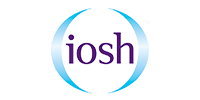ISO 14001: EMS
Environmental management system
What is ISO 14001?
ISO 14001 is an internationally recognized standard for the environmental management of businesses. It prescribes controls for those activities that have an effect on the environment. These include the use of natural resources, handling and treatment of waste, and energy consumption.
What is Environmental Management System?
When developed and implemented effectively, the ISO 14001 standard can even enhance an organization’s bottom line through increased efficiency of operations and by attracting environmentally conscious customers by taking a more eco-friendly business approach.
- Providing your company with assurance that you meet, and will continue to meet, your environmental management system commitments and corporate policy requirements
- Verifying your systems for recognizing and complying with environmental laws and regulations
- Increasing profits through potential process improvements and energy conservation
- Reducing your environmental liability
- Reduced cost of waste management
- Savings in consumption of energy and materials
- Lower distribution costs
- Improved corporate image among regulators, customers and the public
How do you start to implement ISO 14001?
Firstly, you need to evaluate the effect your organization has on the environment. You, then, need to prioritize ways in which you might reduce them. Next, identify the boundaries of your management system and document your procedures for implementing the requirements of ISO 14001. You will need to ensure these procedures are implemented and then audited. If you have ISO 14000 systems in place, many of the requirements of ISO 14001 will already be covered, or can easily be incorporated into them.
Why seek certification to ISO 14001?
Once developed, internal audits are needed to ensure that the system keeps on working. The setting of targets for the environmental policy and continual measuring against it ensures that the system is maintained.
Once you have an environmental management system in place, you may choose to have it externally audited. Following a successful audit by an accredited certification body, you will be issued with a certificate of registration to ISO 14001. This demonstrates that your organization is committed to environmental issues and is prepared to work towards improving the environment. It also gives a competitive edge to the company's marketing and enhances its image in the eyes of customers, employees, and shareholders.
A company or organization that has been independently audited and certified to be in conformance with ISO 14001 may publicly state that it is “ISO 14001 certified” or “ISO 14001 registered”.
What benefits will it bring to the company?
Internal benefits
- Improvements in overall environmental performance and compliance
- A framework for using pollution prevention practices to meet EMS objectives
- Increased efficiency and potential cost savings when managing environmental obligations
- Promotion of predictability and consistency in managing environmental obligations
- More effective targeting of scarce environmental management resources
- Enhanced public posture with outside stakeholders
Competitive benefits
- Increase in process yields
- Less downtime through more careful monitoring and maintenance
- Improved utilization of by-products
- Conversion of waste into commercially valuable forms
- Reduced energy consumption
- Savings from safer workplace conditions
ISO 14001:2015 Now Published
The ISO 14001:2004 standard to ensure that the standard remains relevant in the business world we live in today.
The ISO committee updated the ISO14001 standard in order to keep the EMS requirements current and relevant for the world we live in today. ISO14001:2015 has been updated and designed to respond to new initiatives and environmental terminology and concepts.
WHAT’S NEW?
The changes can be divided into two areas. First those related to the Annex SL introduction and second those specifically related to the revision of ISO 14001 standard which includes:
- Integration of EMS with the organisation’s business strategy
- Emphasis on environmental leadership Internal and external communication strategy requirements
- More focus on environmental performance and continual improvement
- Life-cycle thinking when carrying out the environmental aspects of the organisation
- Supply chain engagement






